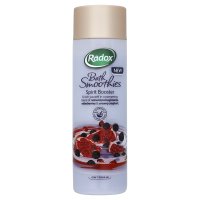--The blurb--
"Beauty is a multi-billion dollar global industry embracing makeup, skincare, hair care, fragrances, cosmetic surgery, and even tattooing and piercing. Over the years it has used flattery, seduction, science and shame to persuade consumers that they have to invest if they want to look their best. In Branded Beauty, Mark Tungate delves into the history and evolution of the beauty business. From luxury boutiques in Paris to tattoo parlours in Brooklyn, he talks to the people who've made skin their trade."
--The review--
As a book and beauty blogger I was pleased to receive a complimentary copy of Branded Beauty from Kogan Page for review, as I don't tend to be asked to review many books on my beauty site (the last was an American coffee-table style publication, Be...A Woman, back in 2008), and my book site is still only a baby (so offers of books for review are hardly forthcoming). I was wary, though, of the "self-published" impression I had of the publisher, as I feel that this industry still has a lot of work to do to build its credibility (although as it turned out I was mistaken - Kogan Page is a small independent publishing house, not a company for those wishing to self-publish). Nonetheless, the author's credentials (work published in The Times, Stratégies, and The Independent, among others), filled me with enough confidence to pick up the book and begin reading.
In spite of its initially specialist-seeming premises and topic, the style in which the book is written is extremely accessible without being patronising, meaning that marketing professionals and beauty aficionados alike should have no difficulty in enjoying it (although the summary of each chapter at its end - Beauty Tips - seems a little too dumbed-down in its style, even for amateurs). The stories from times past, anecdotes from industry insiders and peeks behind the scenes, alongside history and statistics, all contribute to making Branded Beauty an enjoyable and intriguing read. Illustrations would have been nice, but the reality is that the majority of the stories are sufficiently compelling on their own.
The writer's chronological approach makes it clear how the rise and rise of marketing has changed the way we not only look, but also look at ourselves. From this point of view, too, he is at risk of being led astray from his original purpose: from about halfway through the book, it is less and less about analysing how marketing has changed our appearance but more about exposing the controversies behind brands, such as the airbrushing scandals that have plagued certain very large brands, and the fact that not all brands marketing themselves as ethical are as squeaky clean as they may first appear. Nevertheless, even if Tungate does not perhaps 100% achieve his original goal, it makes interesting reading as we try to get past the suspiciously small samples of women on which products have been tested, and get back to the personal histories of what can now all too often seem like faceless global corporations.
But there was one deviation I could not tolerate. Part of Tungate's digression consists of repeatedly taking cheap swipes at the integrity of beauty bloggers. It is suggested and stated strongly throughout that beauty bloggers (along with beauty ediotrs) are traitors, propagandiists, straitjacketed, commercial, and untrustworthy. While I can see how Tungate may have reached this conclusion - I know that I for one have been frustrated at far too many magazines where features on products are as far from honest reviews as possible and are closer to being infomercials - it is far too sweeping to speak of beauty bloggers in the same breath as the magazines that do this. Equally, even though I cannot speak for other beauty bloggers, I wonder how many Tungate himself has actually spoken to: as well as trying to do this myself, I have met many other beauty bloggers who are concerned primarily with transparency, providing honest opinions, and allowing readers to make informed choices - not with glossily providing perfect impressions of a brand or product (regardless of how much the free products we are sent may happen to be worth). Such statements cast gross slurs on community journalists who are just trying to do a good job - and, more to the point, often do it voluntarily alongside more mundane day jobs. In addition, alongside the various assumptions delineated above, there are blatant errors, such as saying that Stri-Vectin SD is a Sephora own-brand product (it isn't).
As mentioned, the book is enthralling for its highly visual sense of history, its amusing and well-chosen anecdotes, and its extremely ambitious and up-to-date scope. Exploring the positives and negatives of the beauty industry, it is bound to be of interest to many. However, it fundamentally fails in its mission thanks to its deviations from its original topic, occasional factual errors, and near-libellous slurs against people like myself, whom the book's publishers so badly want good reviews from in approaching us. Should Tungate wish for this book to be published by a mainstream publisher, I fear that it would lamentably require significant revisions in order to be up to standard (a shame; I was hoping that this book would restore my faith in the credulity of independent/self-publishing houses). For Tungate's intriguing content, I could possibly forgive him and delve into his other books on this subject. For certain aspects of his professional conduct within these pages, though, I may need to think twice.
Other works by Mark Tungate
Luxury World: The Past, Present and Future of Luxury Brands (2009)
Branded Male: Marketing to Men (2008)
Fashion Brands: Branding Style from Armani to Zara (2008)
Adland: A Global History of Advertising (2007)
Media Monoliths: How Great Media Brands Thrive and Survive (2005)
cross-posted to Bianca's Book Blog



















